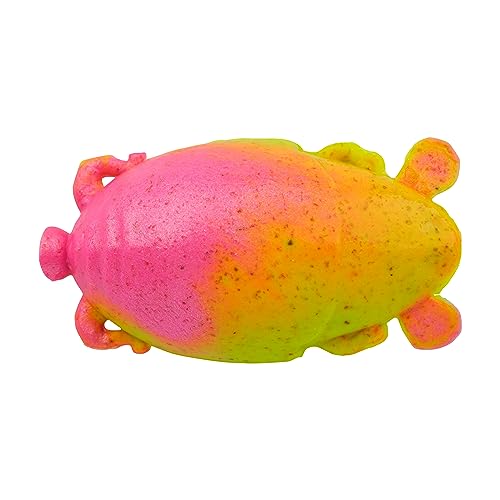Learn how to surf fish by selecting the right gear and bait, finding the best fishing spots, and using proper casting techniques.

Credit: interestedvideos.com
Choosing The Right Equipment
Surf fishing is an exhilarating and fulfilling experience for beginners who are looking to explore the world of fishing. And while it may seem like a daunting task initially, choosing the right equipment is crucial to your success in surf fishing.
In this section, we will delve into the key aspects of selecting the appropriate rod and reel, picking the right fishing line, and understanding the importance of hooks and weights.
Selecting The Appropriate Rod And Reel
When it comes to surf fishing, your rod and reel are your most essential tools. Here are some key points to consider when selecting the appropriate rod and reel:
- Rod length: Opt for a longer rod, typically between 9 and 12 feet, as it provides better casting distance and the ability to handle larger fish.
- Rod power: Choose a rod with medium to heavy power to withstand the strong ocean currents and larger species commonly found in surf fishing.
- Reel size: Pair your rod with a spinning reel that can handle saltwater conditions. Look for a reel with a higher line capacity and a smooth drag system.
- Material and construction: Consider rods made from graphite or composite materials for their lightweight and durability.
- Budget: Determine your budget and invest in a rod and reel that strike a balance between quality and affordability.
Picking The Right Fishing Line
The fishing line is a critical component of your surf fishing setup. Here are some important factors to keep in mind when picking the right fishing line:
- Line strength: Opt for a fishing line with a higher pound test rating to withstand the strong forces in surf fishing. A line with a test rating between 15 and 30 pounds is commonly used.
- Line material: Choose a fishing line made of monofilament, fluorocarbon, or braided material. Monofilament lines are versatile and budget-friendly, while fluorocarbon lines offer excellent invisibility underwater. Braided lines are known for their exceptional strength and sensitivity.
- Line visibility: Consider the visibility of the fishing line in various water conditions. Clear or low-visibility lines are ideal for clear waters, while high-visibility lines are useful in rough and murky waters.
- Line diameter: Thinner lines offer better casting distance and reduced drag in the water, while thicker lines provide greater strength and resistance against abrasion.
- Line maintenance: Regularly inspect and replace your fishing line to avoid any weakening or fraying that may compromise your chances of landing a catch.
Understanding The Importance Of Hooks And Weights
Hooks and weights play a crucial role in surf fishing, enabling you to effectively present your bait and lure to the fish. Here are some key points to understand their importance:
- Hook size: Select the appropriate hook size based on the target species you intend to catch. Larger hooks are suitable for larger fish, while smaller hooks are ideal for smaller species.
- Hook material: Look for hooks made from stainless steel or other corrosion-resistant materials to withstand the harsh saltwater environment.
- Hook type: Different types of hooks, such as j-hooks, circle hooks, or treble hooks, serve specific purposes. Understand the characteristics and advantages of each hook type for different fishing techniques.
- Weight selection: Use weights, also known as sinkers, to hold your bait or lure in place and allow casting over longer distances. The weight size should correspond to the current and surf conditions, ensuring your bait stays where you want it.
- Weight material: Choose weights made of lead or other non-corrosive materials to withstand the saltwater environment while providing the necessary stability for your fishing setup.
Now that you have a solid understanding of how to choose the right equipment for surf fishing, you can embark on your angling journey with confidence. Remember, proper equipment selection is a fundamental step towards a successful and enjoyable surf fishing experience.
So gear up, head to the water’s edge, and cast your line into the vast ocean, where exciting catches await!
Researching The Best Surf Fishing Spots
Evaluating Local Tide Charts And Weather Conditions
Understanding the tides and weather conditions is essential when researching the best surf fishing spots. Here are some key points to consider:
- Check local tide charts:
- Tide charts provide information about the height and timing of the tides, which can greatly affect surf fishing success.
- Look for incoming tides, as they tend to bring in baitfish and attract larger predatory fish to the surf zone.
- Aim for the period around high tide for optimal conditions, as it creates deeper water for fish to enter closer to shore.
- Consider weather conditions:
- Pay attention to wind direction and speed. Onshore winds can stir up the water, making it murkier and reducing visibility for fish.
- Calmer winds or offshore breezes can create cleaner water, improving visibility and increasing the chances of attracting fish.
- Look for overcast or cloudy days, as fish are more likely to venture closer to shore in search of food in darker conditions.
- Use online resources:
- Utilize websites or apps that provide real-time weather updates and tide information for your location.
- These platforms can help you plan your fishing trips based on the most favorable conditions, maximizing your chances of success.
Remember, assessing both the tide charts and weather conditions together will give you a comprehensive understanding of the ideal time to fish.
Identifying Key Features Of Productive Surf Fishing Areas
When researching the best surf fishing spots, it’s crucial to identify key features that are indicative of productive fishing areas. Here are some important points to consider:
- Structure and topography:
- Look for areas with natural features like sandbars, rocky outcrops, or jetties. These structures create favorable conditions for fish to congregate and find food.
- Deep channels or troughs near the shore also attract fish, as they provide a pathway for baitfish and predator fish.
- Baitfish presence:
- Spotting schools of baitfish is a good indicator of productive surf fishing areas.
- Scan the water for signs of baitfish activity such as jumping or splashing.
- Predatory fish are likely to be nearby, as they hunt these schools for food.
- Rip currents:
- Rip currents can be excellent areas to target for surf fishing.
- These strong water currents create turbulence and dislodge small creatures, attracting predatory fish.
- Exercise caution and fish from a safe distance when targeting rip currents.
- Local knowledge:
- Tap into the local knowledge by talking to experienced anglers or visiting local bait shops.
- Locals can provide valuable insights into productive surf fishing areas, including specific spots or times known for success.
By considering these key features and sources of information, you can narrow down your search for the best surf fishing spots and increase your chances of having a successful fishing experience.
Mastering Essential Surf Fishing Techniques
Surf fishing is a thrilling and rewarding way to enjoy the great outdoors. Whether you’re a beginner or an experienced angler, mastering essential surf fishing techniques is crucial to your success. In this section, we will explore three key techniques that will help you improve your casting accuracy, adjust to different types of bait and lures, and handle and release caught fish properly.
Casting With Accuracy And Distance
When it comes to surf fishing, casting with accuracy and distance is essential to reach those prime fishing spots. Here are some key points to keep in mind:
- Position yourself correctly: Stand with your feet shoulder-width apart, facing slightly sideways to the water. This will provide a stable base and allow you to cast with more control.
- Use proper grip and technique: Hold the fishing rod firmly but not too tight. Keep your wrist straight and use your forearm and shoulder to generate power during the cast.
- Time your release: As you bring the rod back, release the line at the right moment to achieve maximum distance and accuracy. Practice your timing to develop a smooth and efficient cast.
Adjusting For Different Types Of Bait And Lures
Choosing the right bait and lures for surf fishing can greatly impact your catch. Here’s what you need to know when adjusting for different types of bait and lures:
- Understand local fish preferences: Research the types of fish that inhabit the surf in your area. This will give you insights into their feeding habits and preferred bait.
- Match the bait to the conditions: Consider the water clarity, time of day, and weather conditions when selecting your bait or lure. Brightly colored lures work well in murky water, while natural bait can be more effective when the water is clear.
- Experiment and adapt: Don’t be afraid to try different bait and lure combinations until you find what works best for you. Fish behavior can change, so being adaptable will increase your chances of success.
Handling And Releasing Caught Fish Properly
As responsible anglers, it’s our duty to handle and release caught fish properly to ensure their survival. Here are some important guidelines to follow:
- Keep the fish in the water as much as possible: Avoid removing the fish from the water unless necessary. Handling fish with wet hands and using tools like dehookers or pliers can help minimize the stress on the fish.
- Use proper catch and release techniques: If you intend to release the fish, do it quickly and gently. Support the fish by cradling it with both hands and immerse it back into the water, allowing it to swim away on its own.
- Practice proper fish care: When planning to keep the fish, have a cooler or live well prepared to maintain its freshness. Treat the fish with respect by dispatching it swiftly and humanely.
Remember, mastering these essential surf fishing techniques takes practice and patience. By honing your casting accuracy, adjusting for different types of bait and lures, and handling and releasing caught fish properly, you’ll enhance your overall fishing experience while preserving the aquatic ecosystem.
So get out there and enjoy the excitement of surf fishing!
Conclusion
Surf fishing is an exciting and rewarding hobby for beginners. By following the tips and techniques discussed in this blog post, you can enhance your chances of success and have an enjoyable experience on the beach. Remember to choose the right gear and bait, and to study the tides and weather conditions before heading out.
It’s also important to practice casting and reeling techniques to improve your accuracy and distance. Patience is key when surf fishing, as it may take some time to get bites. Don’t get discouraged and keep experimenting with different techniques until you find what works best for you.
So grab your fishing gear, head to the beach, and give surf fishing a try. It’s a fantastic way to connect with nature, relax, and potentially catch some impressive fish. Happy fishing!






